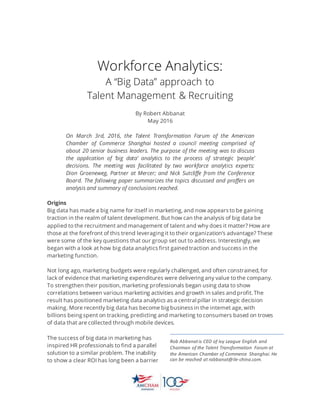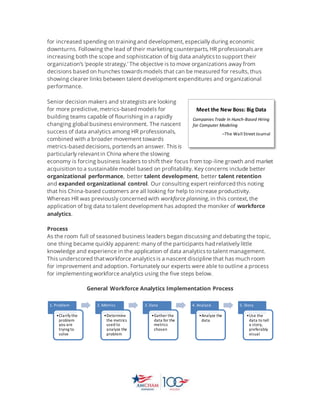1) The document discusses how workforce analytics uses big data approaches to improve talent management and recruiting. It outlines a 5-step process for implementing workforce analytics: clarifying the problem, determining metrics, gathering data, analyzing the data, and presenting results visually.
2) Most companies are still only reporting workforce analytics data, while few are able to forecast or simulate results. Examples are given of how some companies have used workforce analytics to optimize retention, promotions, and talent acquisition strategies.
3) The meeting discussed how workforce analytics can help move companies from decisions based on hunches to data-driven models, showing clearer links between talent expenditures and organizational performance.





